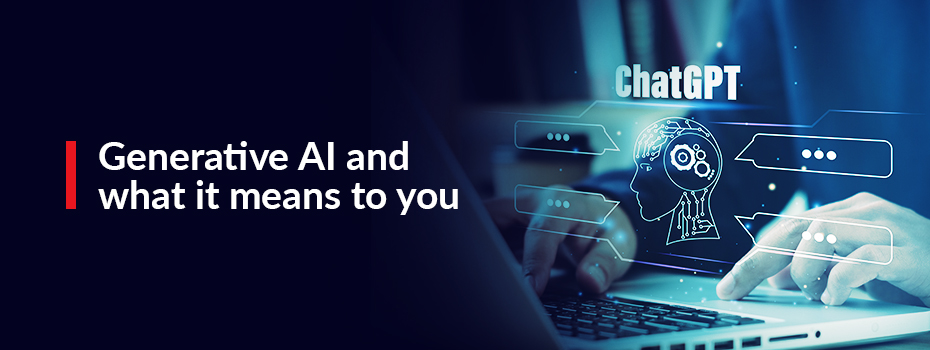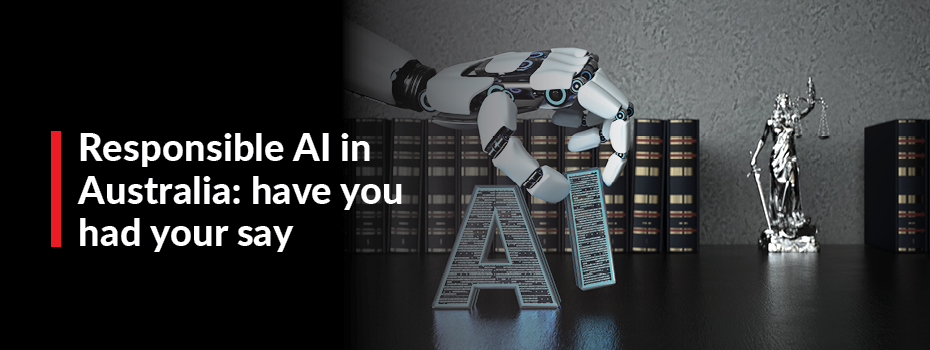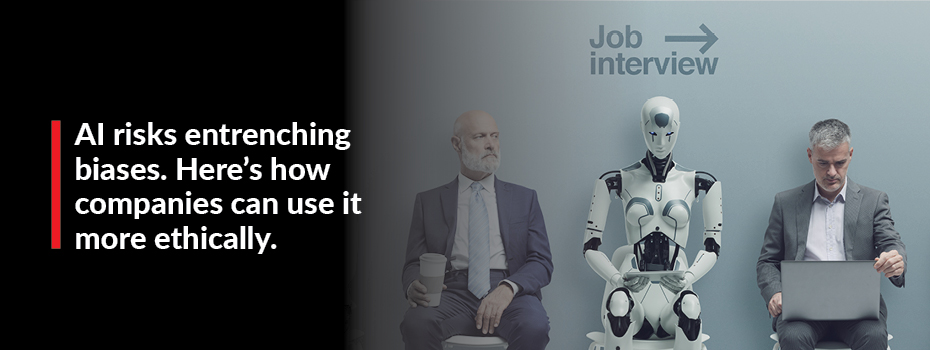
Generative AI and what it means to you
29 January 2023 08:08
Unlike its generative predecessors such as Midjourney and DALL-E 2, ChatGPT seems to have caught the interest and imagination of the mainstream. I’d initially held-off writing anything on the launch of ChatGPT due to the hype that accompanies these launches, but over a month later, it is still very much in the public consciousness. While it is still early days, ChatGPT represents a significant set forward in generative Artificial Intelligence (AI), which leads us to the questions of what is generative AI? What happens next? And what does this mean for legal professionals? I’ll try my best to answer each of these, with a little help from ChatGPT along the way!
What is generative AI?
Generative AI is a type of artificial intelligence that is focused on creating new data. This can include creating images, text, music, or other forms of content. The process involves using a set of algorithms, such as deep learning, to generate new data that is unique and varied. The generated data can be used in a variety of applications, such as in art, media, and entertainment. Generative AI is a rapidly evolving field, with new developments and applications being discovered all the time. It is a powerful tool for creating new and innovative content.
ChatGPT is one such example of generative AI, that has fine-tuned to handle a variety of conversational tasks such as question answering, dialogue generation, and text completion. In comparison, DALL-E 2 is a generative AI that was designed to generate images from text descriptions. It’s well worth giving both of these a go if you haven’t yet!
Generative AI is the next generation in the development of AI enabled solutions. Since the recent trend for using AI started, we’ve been seeing higher levels of complexity and sophistication. Initially the focus was on closed problems with definitive solutions (e.g., Chess, Go), then came a focus on classification problems (e.g., clause identification). With the next generation of algorithms, that included the BERT models and GPT 2, the focus has been on understanding problems (e.g., clause or semantic similarity). Now with GPT 3(.5) and the rise of the Large Language Models, we are being able to move into natural language and image generation.
It's also important to note, for later, that at the core of generative AI (and ChatGPT is no exception) is a probabilistic model. What this means is that when generating responses, probabilistic models try to infer (guess) what the ‘answer’ should be based on examples from its training data. A helpful analogy for this is predictive text you see on your phone – it tries to infer the next word using the previous one. One way of achieving this is a ‘bag of words’ approach, where the model chooses the word, you use most often following the prompt as the prediction (e.g., when typing ‘more’ it may suggest ‘than’ or ‘information’). The probabilistic / inference-based nature of these models results in some outcomes that may be surprising. These models can respond differently even when asked the exact same question twice and can easily get facts incorrect due to how they are included in the training data.
Probabilistic models are in contrast to deterministic models, which provide specific answers to specific questions. This is more akin to searching for items in authoritative sources such as reference databases (e.g., search for what is promissory estoppel in a legal dictionary). Deterministic models are focused on getting the correct outcome / answer and removing uncertainty along the way. While most real-world environments are not deterministic, there are use-cases for which this level of accuracy matters, which we will discuss more about in a little bit.
What happens next in the Generative AI scenario?
Right now, generative AI is still in its infancy and the full effects of unlocking and commoditising content and image creation are yet to be understood. Already these tools have sparked controversy, with an AI generated image winning the Colorado State Fair’s art competition[1] and educational providers working out how to detect AI generated essays[2]. As we generate more and more use cases for them, it is likely that the controversy will continue, but before we know it, we will all be using these tools in our daily life without realising.
One example of the longer-term impact of commoditising content and image creation is likely to drive hyper-personalisation of entertainment media. For example, you may get home and decide that tonight you’d like to read a 100-page crime novel with a noir twist set in Harlem, which could be generated within minutes by generative AI*. This level of hyper-personalisation and generation will likely change the structure of the entertainment media industry with a niche forming of high-quality original works and a mainstream of highly personalised AI generated works. Somewhat similar to what we already see in art with prints of paintings going for a fraction of the price of the original. There will also be a middle-layer within this sort of market of ‘AI-whispers’ who understand the nuances of how to use these models to generate better media, just for you, providing a premium outcome for a fraction of the price of an original work. This AI whispering is critical to driving logical and reasonable outputs and is something I’ve had to do extensively with this article.
Within knowledge-based domains that require high levels of accuracy or are constantly changing, such as the legal profession, the probabilistic nature of generative AI can be problematic. It is well known that ChatGPT makes mistakes, particularly related to factual queries[3], which is driven directly by it being a probabilistic model. Generative AI is unlikely to ever be as accurate as using a deterministic service when identifying data and information. Therefore, within settings where accuracy is a key requirement, like legal, generative AI is likely to be significantly less impactful compared to entertainment media. While generative AI will be supportive in first draft generation, it will be necessary to check and cross-reference results with authoritative sources using experts.
Similarly, you’d expect to see this same dynamic of lower impact in changing environments (e.g., court cases driving new legal regimes). Once you have a generated answer it’ll be necessary to cross-check versus the latest developments to ensure that the answer is still accurate. This is due to generative AI being a product of its training data, which has a bias to the past, rather than recent events. Generative AI will only be as strong as its training data, which even when encompassing the public web, is limited in scope. This is particularly clear when you ask Chat GPT what it thinks it’s impact will be in the legal industry, which primarily focuses on existing AI-powered tools:
AI-powered tools can quickly and efficiently scan through large amounts of legal documents, such as contracts and case law, to identify relevant information and potential issues. This can save lawyers a significant amount of time and allow them to focus on more high-value tasks.
In addition, generative AI can be used to create legal documents, such as contracts and briefs, more efficiently. AI-powered tools can be trained on existing legal documents to understand the language and structure of legal writing. This allows them to automatically generate new documents that are tailored to specific legal situations. This can save lawyers a significant amount of time and allow them to focus on other important aspects of their work.
Generative AI can also be used to help predict the outcome of legal cases. AI-powered tools can be trained on past case law to understand the factors that are likely to influence the outcome of a case. This can help lawyers anticipate potential challenges and develop effective strategies to overcome them. Additionally, AI can be used to help predict the outcome of legal disputes, which can be helpful in negotiations and settlement discussions.
For both high accuracy settings and changing environments, using generative AI requires a careful and expert eye to ensure that incorrect details are identified and updated. There will be continued improvements and refinements in these models to make them more suitable for these types of environments, but these will always remain risks. That being said to give you an idea of how strong generative AI already is for non-critical tasks, I’ll let you decide which parts of this article have been written by ChatGPT, where I’ve been editing its responses, and what is original content.
What does Generative AI mean for legal professionals?
Initially the release of these generative AI models will have a limited impact on legal professionals. The first impact of Large Language Models and Generative AI will likely be in developing enhanced capabilities for existing AI-enabled solutions. These models will need to be fine-tuned by providers to ensure that they are suitable for the legal domain, since they are mostly trained on the open web. While early applications leveraging these tools are appearing, there will be a continued ramp-up on maturity and accuracy as we have already seen in other AI-enabled solution fields.
Specifically, within the legal domain, generative AI will help support the creation of first drafts of various documents including contracts, motions, advice letters. These more customised templates will need to be carefully reviewed by expert practitioners to ensure that they are accurate and reflect both the law and market practice. Generative AI will also be able to provide summaries of various documents, helping to streamline review processes to enable legal professionals to be able to focus their time on what matters the most and where they can add the most value.
Overall, generative AI in legal will continue the trend we are already seeing of AI-enable solutions facilitating legal professionals to focus their time and effort on high-value and interesting areas of work, rather than undertaking lower-level process tasks. It’ll likely take a few years before these technologies are widespread in practice, but we are already seeing initial solutions come to market.
If you’d like to know more, please do speak with one of our experts today.
*In-case you are interested, this is ChatGPT’s short synopsis of this novel, I’ll let you decide if you’ve read this one before, I think I may have…
The novel, set in the gritty streets of Harlem, follows the story of a hard-boiled private investigator named Jack. Jack is a man with a dark past, haunted by the memories of his time in the military and the death of his wife. He's been living in Harlem for the past few years, working as a private investigator, and trying to forget his past. One day, a woman named Lila approaches Jack with a case. Lila is a young and beautiful woman who is desperately trying to find her missing sister. Jack starts to investigate the case and quickly realizes that the situation is much more complex than he initially thought. He discovers that the local gang, led by a ruthless and powerful crime boss named "The Boss", is involved in various illegal activities. Jack decides to take on The Boss and his gang, but he knows that it won't be easy. He's outnumbered and outgunned, and The Boss has many connections in the city. Jack starts to gather information and evidence, but he soon realizes that he's being followed and that his life is in danger. He also starts to feel a growing attraction to Lila, which complicates things even more. As the story unfolds, Jack finds himself in a dangerous game of cat and mouse with The Boss and his gang. He's determined to find Lila's sister and bring The Boss to justice, but he also knows that he's risking his own life in the process. The climax of the story comes when Jack finally confronts The Boss in a final showdown, where he must use all of his skills and wits to outsmart and defeat him.
This article has been written by Patrick Breen, with outputs from OpenAI’s ChatGPT engine used to supplement the text.
Latest Articles
-
 Gayann Walkers is a well-respected Victorian Barrister. Tis interview focuses on what it takes to be a Barrister in sports law, and what the future of the field looks like.
Gayann Walkers is a well-respected Victorian Barrister. Tis interview focuses on what it takes to be a Barrister in sports law, and what the future of the field looks like. -
 The growth of artificial intelligence technologies in Australia has recently come under the spotlight, as the Albanese Government looks to review existing regulatory and governance mechanisms and establish applicable safeguards that are fit for purpose in the current day and age.
The growth of artificial intelligence technologies in Australia has recently come under the spotlight, as the Albanese Government looks to review existing regulatory and governance mechanisms and establish applicable safeguards that are fit for purpose in the current day and age. -
 Artificial Intelligence (AI) is developing fast – but how should it be used? Over the past month, the ethical use and development of AI have been heavily scrutinised as policymakers, intellectuals, and industry leaders debate whether a moratorium should be imposed on AI’s development, or whether AI should be embraced in the name of economic growth.
Artificial Intelligence (AI) is developing fast – but how should it be used? Over the past month, the ethical use and development of AI have been heavily scrutinised as policymakers, intellectuals, and industry leaders debate whether a moratorium should be imposed on AI’s development, or whether AI should be embraced in the name of economic growth.
Clause Intelligence
Your AI-powered legal drafting research assistant. Reduce risk and save time by adding a new level of intelligence to your legal drafting workflow. Clause Intelligence works alongside Lexis Create, your perfect solution for drafting accurate legal documents.
LEARN MORE LexisNexis
LexisNexis